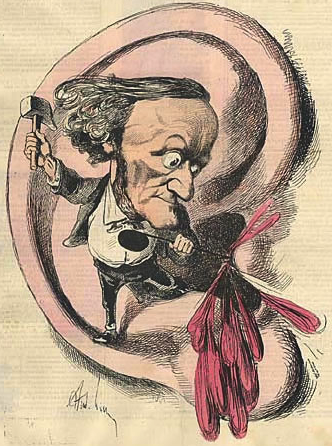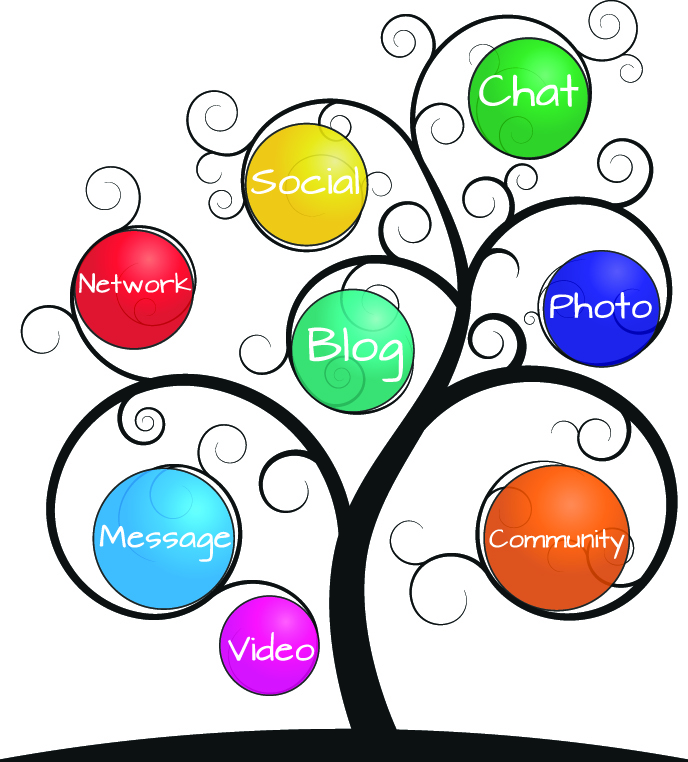 In this guest blog Professor Tim Crawford, Principal Investigator on the AHRC large grant project Transforming Musicology, explores how new technologies are influencing the ways in which we experience, make and study music. Research conducted by the Transforming Musicology project forms the basis the Being Human event Hearing Wagner at the Birmingham Hippodrome.
In this guest blog Professor Tim Crawford, Principal Investigator on the AHRC large grant project Transforming Musicology, explores how new technologies are influencing the ways in which we experience, make and study music. Research conducted by the Transforming Musicology project forms the basis the Being Human event Hearing Wagner at the Birmingham Hippodrome.
Digital Transformations
As everyone knows, the world of music production and distribution has been transformed by digital technology. And the context in which music is made, shared and discussed between its enthusiasts has changed too, with the inexorable rise of social media as an everyday part of people’s lives. The three-year AHRC Digital Transformations Large Grant project, Transforming Musicology, aims to encourage the academic discipline of musicology to take account of these changes, not just in the way research is done, but also in the range of music that can now be studied with digital tools.
Countless millions of music tracks of every possible musical genre are now available for instant download thanks to digital technology, and that same technology offers previously undreamt-of ways in which we can study music and its impact on society. At the same time, the rapid evolution of the world wide web and social media gives promise of entirely new ways in which communities of expertise in music, from professional scholars through to bedroom d.js, can debate and share their ideas, communicate them to the world and contribute to a greater understanding of the universal phenomenon we call music.
Transforming Musicology
In Transforming Musicology we’re adapting and using technology largely developed to serve the music industry to see how its  tools can best serve the interests of musicology, which we define very broadly as ‘the deep study of music’. For example, the textual information retrieval (IR) technology that powers familiar online services such as Google has its parallel in music information retrieval (MIR). It is now possible – albeit with certain limitations – to search large collections of recordings by similarity to a query audio file or extract. This opens up the possibility of very rapidly performing certain kinds of music analysis over whole repertories of music.
tools can best serve the interests of musicology, which we define very broadly as ‘the deep study of music’. For example, the textual information retrieval (IR) technology that powers familiar online services such as Google has its parallel in music information retrieval (MIR). It is now possible – albeit with certain limitations – to search large collections of recordings by similarity to a query audio file or extract. This opens up the possibility of very rapidly performing certain kinds of music analysis over whole repertories of music.
Our wider definition in fact broadens the range of musicology in another way because in the process it inevitably becomes more multi-disciplinary in nature, and not just by involving technology; for example, digital methods give us ways in which we can start to incorporate the more rigorous methods of music psychology when we discuss the effect of a certain compositional technique on listeners, rather than relying on subjective introspection. And that’s what our ‘Being Human’ Festival event is designed to demonstrate.
Hearing Wagner
Almost as soon as we were asked to contribute to the ‘Being Human’ Festival, we decided that we should focus on our work on the use of ‘leitmotivs’ in the operas of the 19th-century composer, Richard Wagner (1813-1883), and the way audiences hear them. We rapidly became aware that a very important Wagner event is taking place at the Birmingham Hippodrome just before ‘Being Human’. This is a complete performance, spread over five days (5-9 November), of the entire cycle of four operas known as Der Ring der Nibelungen by the Mariinsky Opera from St Petersburg, under their charismatic conductor, Valery Gergiev.
Leitmotivs are distinctive, generally rather short and memorable fragments of music which can be associated with concepts from the unfolding drama in various ways. In his ten major operas, Wagner developed the use of leitmotivs to represent concepts which may be concrete, like objects, places or people, or abstract, such as the ideas or emotions felt by characters in the drama.
Being Human (Listeners)
Wagner himself disliked the way in which his more enthusiastic followers tried to codify the technique by publishing guides to the leitmotivs in his operas. He preferred audiences to use their own ears and eyes to lead them through the full, all-enveloping multimedia experience which was his conception of music drama, rather than being led by ‘signposts’ from a printed list. He was confident that his own skill as a composer would enable the music to speak for itself, without the audience being told explicitly what they should be hearing and what it meant.
We’d already begun investigating how listeners with varying musical knowledge hear and remember Wagner’s leitmotivs after listening to 10-minute recorded extracts, so we wondered if it might be possible to do something similar on an altogether bigger scale, and actually record audience responses for a complete opera. We suggested this to the Birmingham Hippodrome, who have responded with great enthusiasm. They’ll facilitate us to work with a group of 10 student volunteers in the audience for Gergiev’s Ring, each fitted with unobtrusive yet sensitive devices which will monitor their second-by-second responses to the music using a measure called galvanic skin response (GSR) as well as heart-rate (HR).
Preliminary results from the Ring Cycle audience-response experiment will be presented at our ‘Being Human’ event at the Birmingham Hippodrome on Saturday 22 November. At this event, as well as seeing non-technical introductions to the Transforming Musicology project, to the way Wagner used leitmotivs, and to the way in which the audience responses reflect the progress of Wagner’s music, members of the public will have a chance to try out some of the technology for themselves, including audio-search and the bio-measurement system itself.
___________
Transforming Musicology is one of many leading research projects in the humanities informing the programme of the Being Human festival. For updates on that programme and on the festival follow us on Twitter @BeingHumanFest, and on Pinterest. Don’t forget to sign up to our e-newsletter, too!

